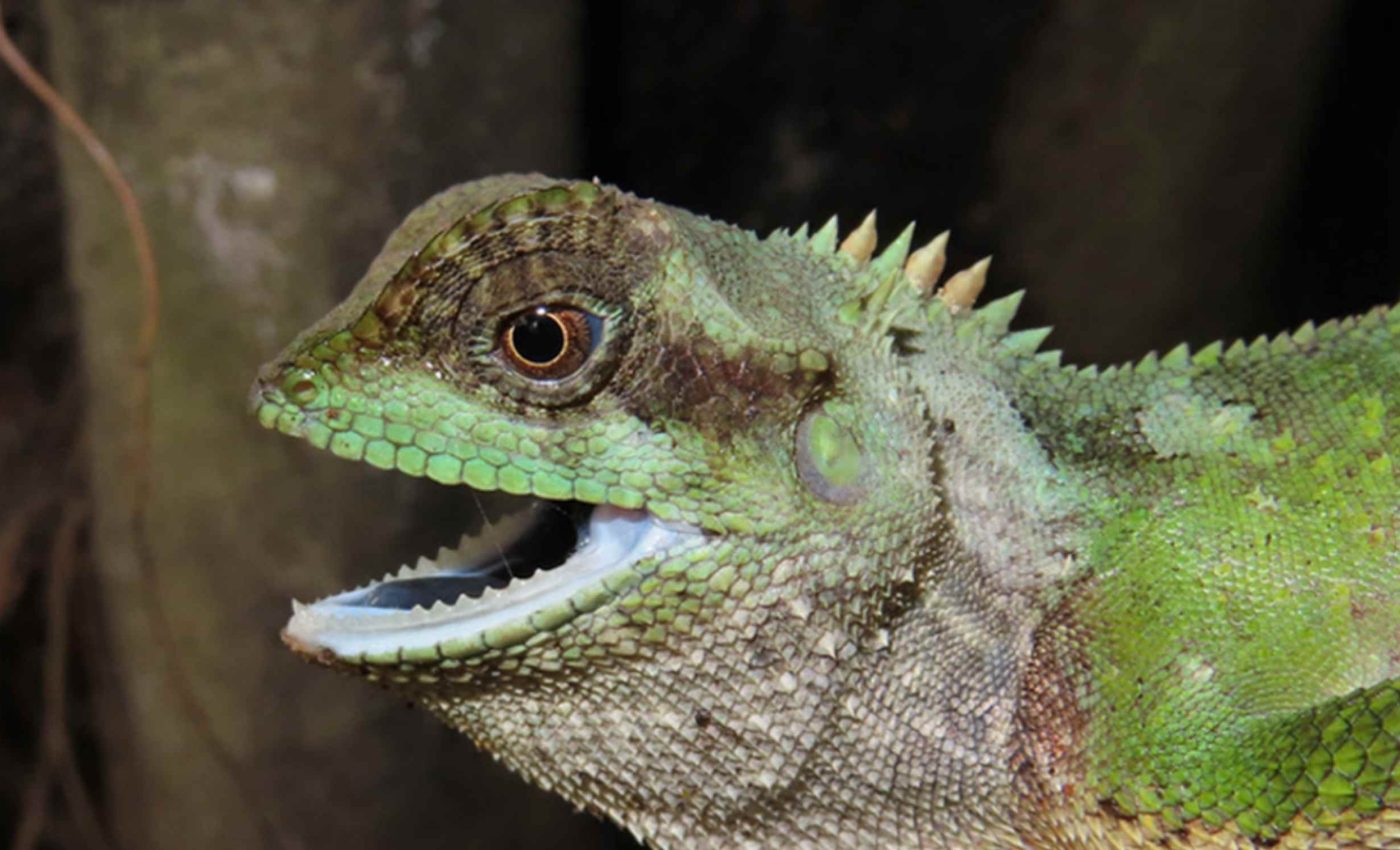
New lizard species discovered with sharp, knife-like spines
Scientists have described a new lizard species from Vietnam, naming it Acanthosaura grismeri. The discovery adds a spiny backed member to a genus already rich in Southeast Asia and highlights how much biodiversity remains hidden in the region’s dense tropical forests.
It comes from Krong Bong forest in Dak Lak Province in the Central Highlands. The animal carries a single row of pointed spines along the back and reveals how even well studied animal groups can still surprise researchers.
Why Acanthosaura grismeri matters
Lead researcher Linh Tu Hoang Le at the Vietnam Academy of Science and Technology (VAST), led the description and analysis. The team combined field notes with lab work to show this animal stands apart.
“The vertebral crest includes a single row of enlarged, keeled, pointed scales,” wrote Hoang Le. That spine pattern is a key feature that separates it from close relatives.
Male members of Acanthosaura grismeri measure about 3 to 3.6 inches in snout to vent length, the standard head-to-hip measure for lizards. Females are noticeably larger, reaching around 4 to 4.5 inches, a size difference common among tree-dwelling reptiles.
Color differences between males and females are striking. Males display a vivid green back with clean patterning, while females show a softer mix of light brown, greenish-yellow hues, and scattered dark spots that help them blend into the forest canopy.
How scientists confirmed it is new
The team used integrative taxonomy, a method that combines DNA, anatomy, and geography to test species limits. That gives scientists multiple lines of evidence for tough calls.
They sequenced the COI gene, a short mitochondrial barcode used to flag distinct lineages, as part of standard barcoding. DNA patterns can spotlight hidden diversity when bodies look similar.
The researchers noted that genetic differences between Acanthosaura grismeri and its closest relatives ranged from 7.82% to 25.36%, a gap large enough to confirm it as a distinct species.
Such variation is well beyond what would be expected within a single species, reinforcing that this lizard represents a separate evolutionary branch within the pricklenape group.
Their family tree also backed the result. The analyses supported monophyly, a group containing one ancestor and all of its descendants.
Small details, big signals
Subtle head markings also matter. Acanthosaura grismeri lacks a black eye patch but shows thin dark lines near the eye and a neat white band along the lip.
Scale rows and crest shape give more separation from lookalikes. The absence of a gap between the neck and back crests was part of the diagnostic package described by the authors.
Those characters may seem tiny at first glance. In lizard taxonomy, small, repeated differences across individuals add up to solid evidence.
These diagnostic traits help rangers, traders, and researchers avoid misidentifications. Clear names support better surveys and more accurate conservation records.
Acanthosaura grismeri‘s habitat
The species was described from Krong Bong forest in Dak Lak. This area includes Chu Yang Sin National Park, a high forest reserve in Krong Bong and Lak districts.
Pricklenape agamas live across a wide area stretching from northeastern India to China and much of mainland Southeast Asia.
They usually inhabit thick, mountain forests, a pattern that matches the cool, forested landscape of Vietnam’s Central Highlands.
Forest complexity helps similar species live side by side. Elevation, canopy gaps, and moisture create small niches that can drive splits over time.
Documenting that diversity is the first step toward guarding it. Names turn anonymous animals into trackable species in law, trade, and land planning.
What the find changes
The genus gains another clearly defined member in Vietnam’s highlands. That pushes biologists to revisit museum specimens and field photos with fresh eyes.
Vietnam hosts a large share of pricklenape diversity within its borders. The Central Highlands, with steep terrain and isolated valleys, remains a likely source of further surprises.
This result also tightens identification keys used by field biologists. Precise spine counts, head lines, and throat bands now carry more weight in separating similar lizards.
Future work can map this species more precisely. Surveys can test whether it is confined to Krong Bong or if it extends into nearby protected forest.
Lessons from Acanthosaura grismeri
Species descriptions are not just name games. They are data rich reports that guide research on ecology, evolution, and disease.
The tools here are widely used across biology. DNA sequences, careful measurements, and repeatable criteria build a common language for scientists.
Learning to recognize these scientific clues prepares future problem solvers. The same careful observation and analysis apply not only to wildlife biology but also to fields like forensics, genetics, and food safety.
It also reminds us that science often advances through quiet, deliberate work. Hours of night surveys and detailed lab tests can uncover new species that have been living unnoticed all along.
The study is published in Zootaxa.
—–
Like what you read? Subscribe to our newsletter for engaging articles, exclusive content, and the latest updates.
Check us out on EarthSnap, a free app brought to you by Eric Ralls and Earth.com.
—–













